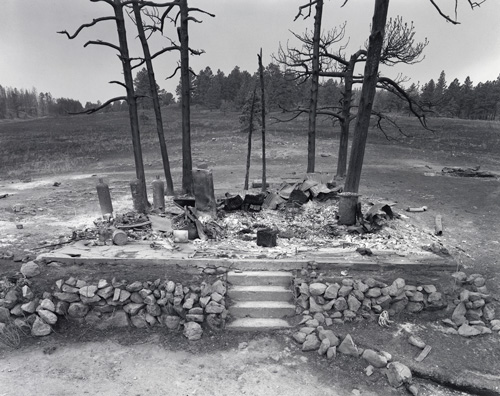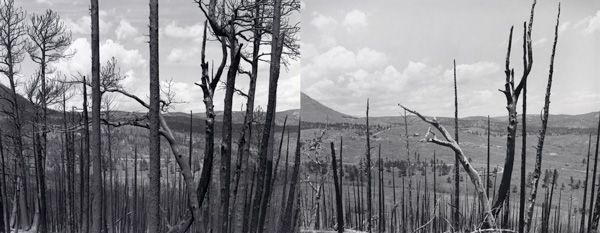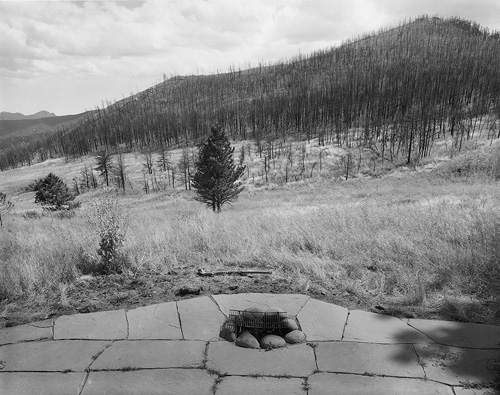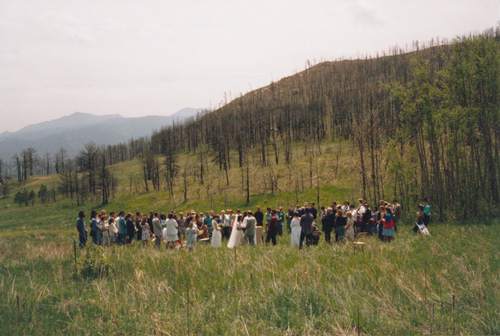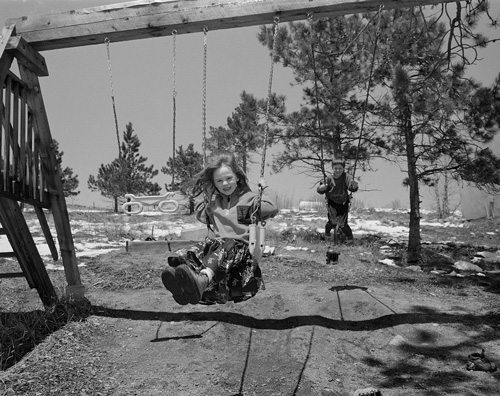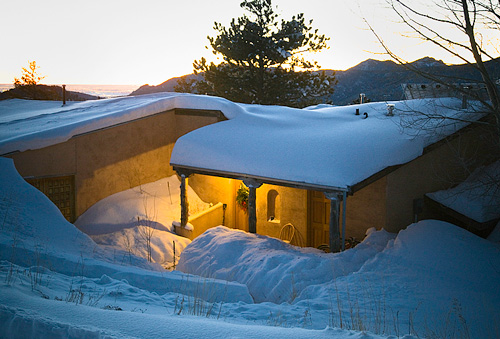
| |
―Stephen Pyne In 1982, when I was looking for land in the Colorado Front Range on which to build a home and create a family, the possibility of a forest fire affecting my life was not among my concerns. At the top of my list was finding a relatively remote and private place that included a south-facing slope to harvest the energy of the sun. My goal was to build a small, earth-sheltered, passive-solar home that would blend with the landscape, integrating the forces of the earth and sky. I told myself that an extra investment in quality land was worthwhile because, although I someday could build a larger house, the land would not change. The Black Tiger Gulch Fire began early on a Sunday afternoon, July 9, 1989, probably from a discarded cigarette. The weather had been extremely hot and dry for several weeks. The wind was blowing hard to the northwest and would thrust the fire from the edge of Boulder Canyon up the steep slopes of Black Tiger Gulch through my meadow and homestead to the top of Sugar Loaf Mountain. I smelled the fire before I understood what was happening. I was painting some cabinets in the kitchen and wondered if something was burning in the house as a result of what I was doing, if perhaps the newspaper I was using as a drop cloth had come in contact with the pilot light of the stove. Then I saw the smoke emerging from behind the mountain southeast from my small house. I hiked the quarter of a mile down to the edge of the gulch to see what was going on and met a fireman talking on a radio. We had no idea of how precarious the situation was. By the time I got back to the house the entire mountain to the south, Mount Pisgah, was in flames as tall as the mountain itself. I closed the windows, grabbed my photographic negatives and dirty clothes bag, and got into the truck. Already the grass adjacent to the house was on fire. A short way from the driveway the road was choked with smoke and flames. I slammed on the brakes and considered going the other way around but then imagined the possibility that the fire might be raging even more intensely there. I plowed ahead through the smoke to join my neighbors in tears at the bottom of the road. After the fire, the hillsides were populated with charred, shiny-black remains of pine and fir trees. The earth's surface was blanketed with a pale-white powder of ash. There were small, tunnel-like holes in the ground where the fire had burned out the roots of trees. The land had become, in effect, sanitized. Litter, old shacks, and squatters' cabins were scrubbed from the land in the flames of the fire. Heavy rains caused flooding, erosion, and silting of Middle Boulder Creek. During one storm, a mudslide crushed a home in Boulder Canyon and left a Volkswagen-sized boulder in the middle of the roadway awash in mud several feet deep. With high winds the dead trees would tumble out of the ground or break in half, leaving tall, exaggerated stumps. For a long time, the air was filled with the smell of smoke and ash. Almost all of my neighbors lost their homes and possessions in the fire. Some sold their land and moved on. Some built new homes. One person built a new house identical to the one she lost in the fire. Another woman built a house that included an elaborate, decorative garden with an automatic watering system and a wall that separated her lush garden space from the charred landscape beyond. A group of neighbors donated materials and time and rebuilt a home for a young family. Some people rebuilt homes but then, failing to adjust to the new landscape created by the fire, moved on. In the months following the Black Tiger Gulch Fire, people expressed the desire to have all the burnt trees cut down. They found the dead trees to be a depressing reminder of the tragedy, as if the dead trees were the only remains of the fire. Sometimes we appear to be oblivious of the dynamics of the place in which we live and have difficulty seeing time beyond our own lives. Fire has always been a major factor in the development of species and ecosystems not only in the Colorado Front Range, but throughout the West. Through the process of evolution, forests have adapted their biology to periodic fires. A healthy ponderosa pine and Douglas-fir forest requires a forest fire every three to ten years to process underbrush and thin weaker trees. Some species, such as lodgepole pine, even require fire for their seeds to germinate. Classic Front Range forests are composed of open stands of large trees that can withstand regular fires that burn slowly on the ground. The thick bark of mature trees protects them from the heat of the fire. But humanity has interrupted the natural balance and regulating effect of fire. During the past century, the Colorado foothills became home to increasing numbers of people, who rigorously suppressed forest fires to protect their property and the value of forests for lumber and recreation. As a result, the forests are overpopulated with undernourished trees and cluttered with standing dead and dry timber killed by insects; when fire inevitably happens, it is intense and severely destructive. In the summer of 1989, the Black Tiger Gulch fire came right up to and around my little house, but the meadow slowed it down, cooled it, and the stucco surface of the house did not burn. Since then, I have lived here almost four times as long after the fire as before the fire. My wife and I got married in the meadow four years after the fire with 120 friends and family witnessing our commitment beneath the burnt hills. I have expanded our house six times over, and we raised two children here. The neighbors I have lived among are some of the most amazing people I have ever known. Each year I watch the spring plants grow and the winter snow matt down the vegetation. So much of my life is invested in this place that I cannot imagine living anywhere else. Fire causes great tragedy. Lives are traumatized, the landscape disrupted, and wildlife scattered. As more forests burn across the West, will we come to think that we live in a spoiled and ruined landscape? Will our spirits be burdened with the belief that what was once beautiful has been destroyed in our lifetime? Or can we learn to face the tragedies of our inhabitance and, at the same time, see the richness of our place within the dynamics of nature? If we desire to live honestly and fully, we cannot pretend to live in a personally pristine wilderness and not see the effects of our collective actions or the greater wonders of the world. We have a place within nature to discover. From a south-facing meadow at the top of Black Tiger Gulch, the land is not what it was before the fire, but it is also not what it was the day of the fire. The land constantly changes and yet remains the same. 1. Pyne, Stephen J., "Sky of Ash, Earth of Ash: A Brief History of Fire in the United States," in Joel S. Levine, Global Biomass Burning: Atmospheric, Climatic, and Biospheric Implications (Cambridge, MA: The MIT Press, 1991), 61. Copyright © 2013 William Sutton. All rights reserved.
|

